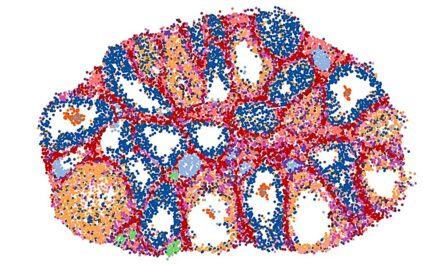A team of researchers from ACS Sensors has developed a novel method to detect amyloid proteins, which are closely related to neurodegenerative diseases such as Alzheimer’s and Parkinson’s. By using an array of sensor molecules, the researchers were able to easily detect amyloids, providing important insights into disease progression and potentially enabling earlier diagnosis and treatment options.
Neurodegenerative diseases often involve a breakdown of communication within the brain, which is caused by the presence of sticky clumps of misfolded proteins called amyloids. These amyloids are closely linked to the progression of Alzheimer’s disease and have the potential to be utilized as biomarkers for early diagnosis.
Currently, radio imaging techniques such as positron emission tomography (PET) scans are used to detect amyloids. However, these methods require sophisticated equipment and primarily focus on specific amyloids associated with the disease. Fluorescence imaging techniques have been explored as a simpler alternative that can detect multiple specific amyloids.
To address this, Margaret Sunde, Elizabeth New, Amandeep Kaur, and their colleagues developed a fluorescent sensor array for amyloids. The team combined five coumarin-based molecular probes, each with a unique fluorescence response when encountering amyloids, into a sensor array. Interestingly, the team discovered that using only two of the probes resulted in a high level of sensitivity and a distinct fluorescent fingerprint for each individual amyloid.
To test the effectiveness of the sensor array, the researchers added it to a sample mixture that mimicked biological fluids and contained molecules that could potentially interfere with the sensing. Despite the presence of these interfering molecules, the array maintained its high sensitivity and selectivity. The team then tested the array on samples taken from the brains of mouse models of Alzheimer’s and observed distinct differences in fluorescence patterns between early and later stages of the disease.
Furthermore, the researchers generated a unique fluorescence fingerprint for three amyloids commonly associated with Alzheimer’s, as well as another disease-associated amyloid and five naturally occurring functional amyloids that are not involved in the disease. This breakthrough tool has the potential to differentiate between closely related amyloids and could lead to new approaches for earlier and more accurate diagnosis of amyloid-related diseases.
The ability to detect amyloids at an earlier stage could be crucial for improving treatment options for neurodegenerative diseases. With further development, this sensor array could be used to monitor disease progression and potentially enable early intervention, ultimately improving patient outcomes. The findings of this study are a significant step forward in the field of neurodegenerative disease research and have the potential to make a tangible impact on the lives of individuals affected by these conditions.
*Note:
1. Source: Coherent Market Insights, Public sources, Desk research
2. We have leveraged AI tools to mine information and compile it




